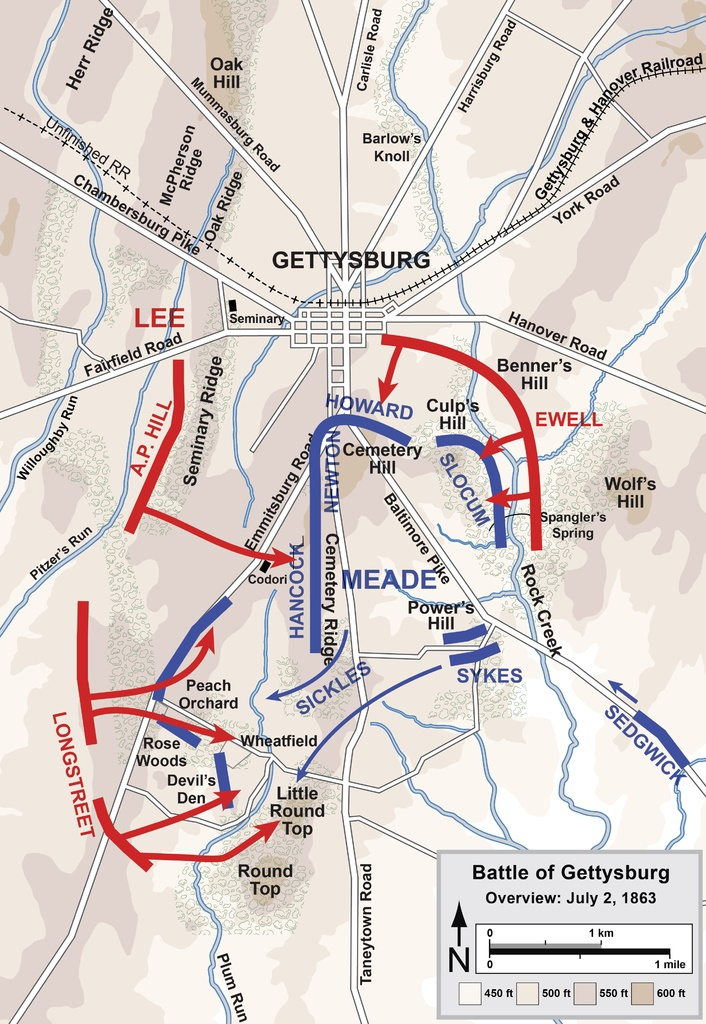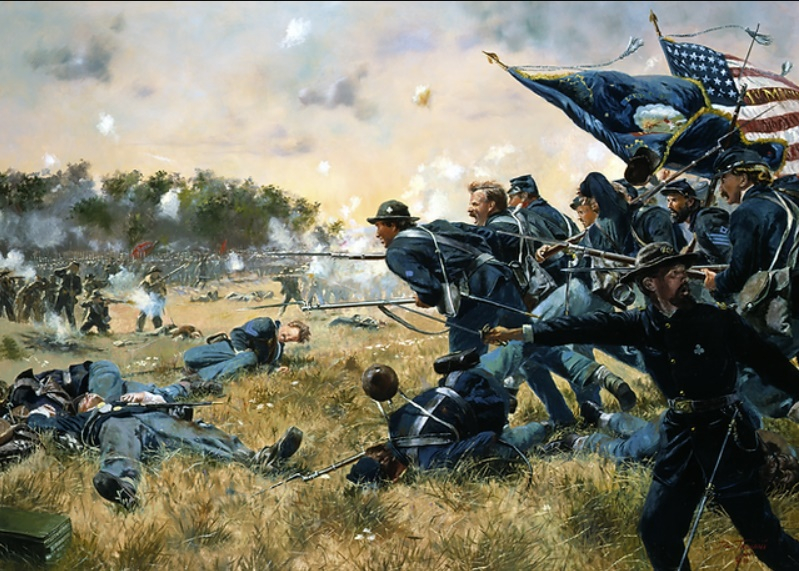The battle on the second day was the largest and most expensive of the three
One of the most outstanding facts about the Battle of Gettysburg is that the battle on the second day was the largest and most expensive of the three. Confederate Gen. Robert E. Lee attempted to capitalize on his first day's victory during the second day of the Battle of Gettysburg (July 2, 1863). His Army of Northern Virginia conducted a series of flanking attacks on the Union Army of the Potomac, led by Maj. Gen. George G. Meade. The assaults were unsuccessful, and both sides suffered severe casualties.
Lt. Gen. James Longstreet launched an attack with his First Corps on the Union left flank. His division, led by Maj. Gen. John Bell Hood launched an attack on Little Round Top and Devil's Den. Maj. Gen. Lafayette McLaws attacked the Wheatfield and the Peach Orchard to Hood's left. Despite the fact that neither side won, the Union III Corps was effectively defeated. To repel these furious assaults, Gen. Meade rushed up to 20,000 reinforcements from elsewhere in his line.
Lt. Gen. Richard S. Ewell, commander of the Confederate Second Corps, turned protests against the Union right flank into full-scale assaults on Culp's Hill and East Cemetery Hill that evening, but both were rebuffed. The Union army had taken solid defensive positions, and Meade controlled his forces efficiently, resulting in high losses for both sides but largely identical force dispositions on both sides. Lee's hopes of defeating the Army of the Potomac on Northern territory were thwarted, but he began planning for the third day.










